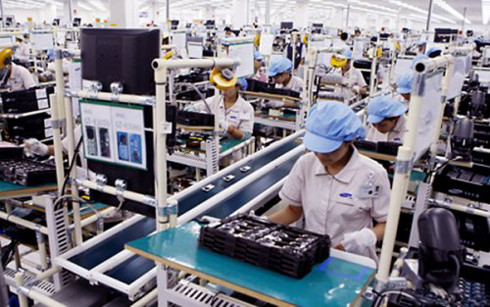Russian autos gain free access to ASEAN via Vietnam
- Vietnam seeks more ASEAN trade
- Vietnam ratifies ASEAN protocol on air transport
- US-ASEAN Business Council asked to connect VN, US firms
Official statistics for 2015, said Mr Phong, showed that the combined exports and imports of Vietnam to and from Russia was roughly US$4 billion, which is only a small fraction of the trade figure of other trade partners.
For comparison purposes, the country’s commercial trade with its five largest trading partners for 2015 was – China (US$66 billion), ASEAN (US$42.1 billion), the US ($41.5 billion), the EU ($41.2 billion) and the Republic of Korea ($36.7 billion).
 |
With total foreign direct investment estimated at just US$2 billion, Russia ranks No. 17 among other economies currently doing business in Vietnam, noted Mr Phong.
While on the reverses side, he added, that Vietnamese companies have foreign investment of approximately US$3 billion in Russia, substantially all of which is in the oil and gas segment.
However, despite the relatively weak economic ties, the two countries have strong cultural and political links dating back to the Soviet Union era, Mr Phong observed.
Notably, a study by the Pew Research Centre, a think tank based in Washington DC, the US, conducted in 2015 showed that 75% of Vietnamese people viewed Russia positively. Of all the people surveyed in some 40 countries, only 30% saw Russia favourably.
Russia became Vietnam’s first strategic partner in 2001 even before its major Asian neighbours like Japan (2006), India (2007) and China (2008). Alongside China, Russia is currently one of the two countries with which Vietnam has established a comprehensive strategic partnership.
In May 2015, following six years and eight rounds of negotiations, Vietnam signed a free trade agreement with the Russia-led Eurasian Union (EAEU), comprised of Armenia, Belarus, Kazakhstan, Kyrgyzstan and Russia.
That Agreement and the new free trade region it created came into force this past October 2016, noted Mr Phong, adding that it holds great promise for eliminating both tariff (previously at 5.63%) and non-tariff barriers to trade of Vietnam with the EAEU.
Pursuant to the Agreement, the EAEU eliminates import duties on 88% of goods imported from Vietnam either immediately when the Agreement came into force or with a phase-out transit period of five to 10 years.
Thus, Vietnamese producers have already gotten significant preferential access to many consumer goods markets of the EAEU including clothes, shoes, fish, rice, fruits, vegetables and consumer electronics.
In return, the average level of Vietnam duties imposed on EAEU goods will drop from 10 to 1%.
Vietnam has agreed to eliminate its import duties on 91% of its goods' nomenclature, which means that zero duties will apply to EAEU beef, dairy products, tinned fish, flour, cereals as well as to rolled steel, pipes, asbestos, ships, petroleum products and many other categories of goods.
The duty on petrol will be reduced from 19 to 0% with a transition period; on cables, from 20 to 0% over a period of 10 years; for large goods vehicles, from 17 to 0%.
Vietnam has also agreed to partially liberalize access to its market for EAEU tobacco products, while the EAEU automobile industry companies will be given exclusive access to the Vietnamese market.
Vietnam has signed an investment agreement for the industrial assembly of cars and trucks with companies from Russia and Belarus. Assembled vehicles will be considered as manufactured in Vietnam and will thus have free access to the markets of ASEAN member states.
We hope that the growth in trade resulting from the newly created free trade EAEU region will increase to US$10 billion by 2020 as agreed upon by the two governments, noted Mr Phong.
However, the challenges such as high shipping costs due to the geographical distances, along with differences in business culture and languages may prove to be too formidable obstacles for Vietnamese companies.

